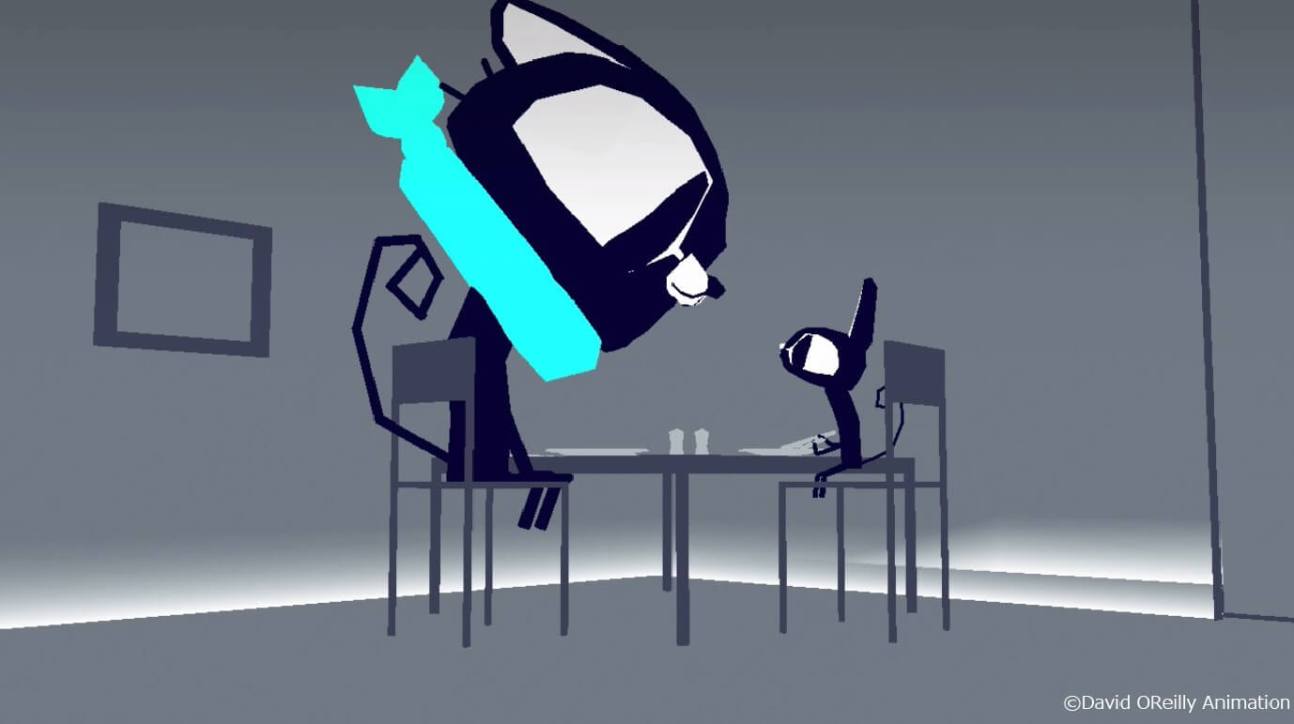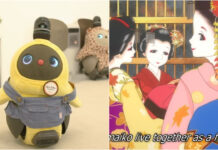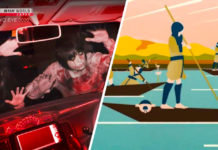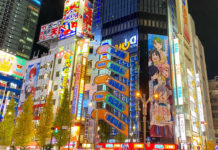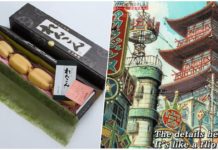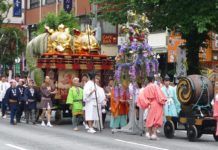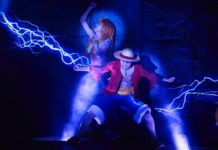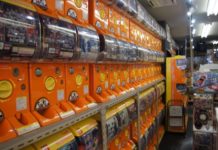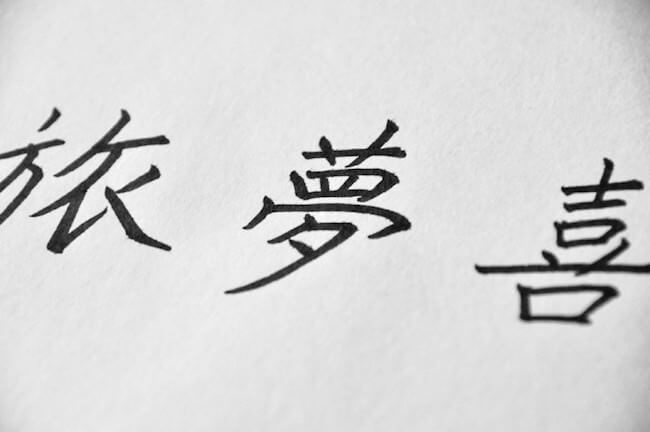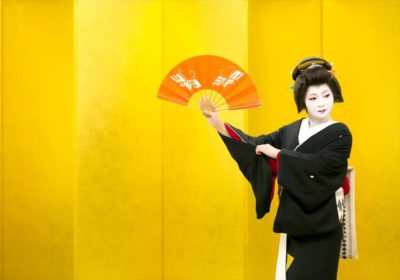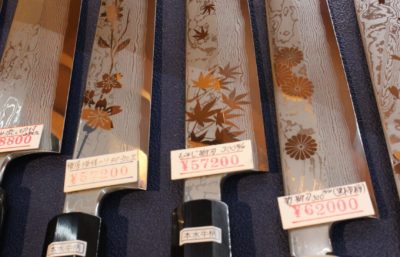[WAttention X FIELDS Research Institute]
Explore the fascinating world of Japan’s subcultures with insights from the inside
Interview with David OReilly and Caleb Wood
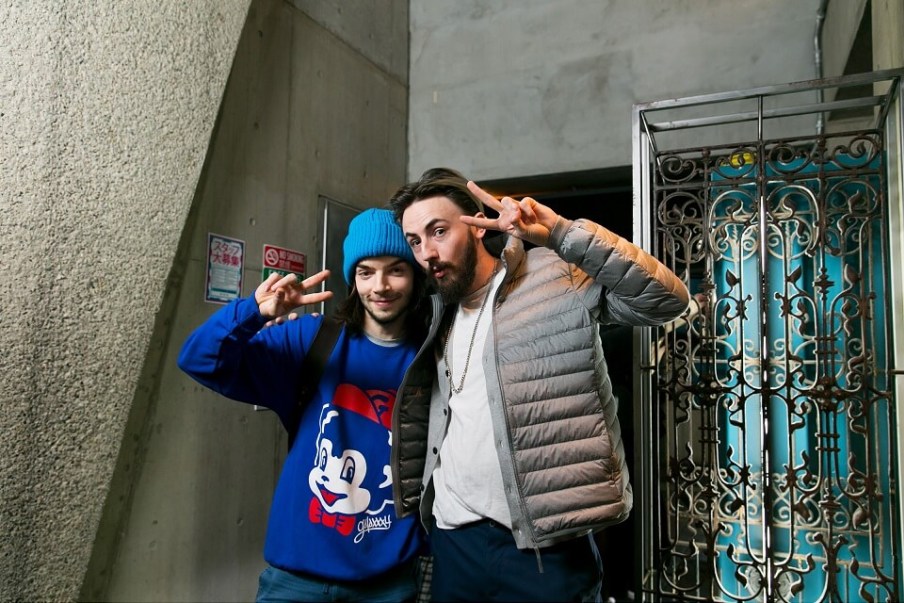
Japanese anime, manga and video games have great followings in the west, but how do western creators look at such Japanese contents?
At GEORAMA 2016 – an animation festival held mainly in Shibuya and Koenji from February 2 to 23 – animated films from throughout the world were brought together. WAttention was on site, and had the chance to interview two worldwide acclaimed artists, David OReilly and Caleb Wood.
David OReilly is a self-taught Irish 3D animation film maker and game developer based in Los Angeles. At the festival, his short films “Please Say Something”, “External World” and “THE HORSE RAISED BY SPHERES” were shown in Japanese cinema. Many of his works capture modern pop culture in a satirical way, but also have something genuine and emotional about them. He is also responsible for animating a scene in “her”, the 2013 movie directed by Spike Jonze. In 2014, OReilly created “Mountain”, a game best described as a mountain simulator. This was his first achievement as an independent game developer.
Caleb Wood is an independent American animation artist based in New York. After graduating from Rhode Island School of Design in 2011, he has been active as a freelance animation artist. “Little Wild”, “Totem” and “Goodbye Rabbit, Hop Hop” are some of his best known works. His works are abstract and generally have no narrative. It is the animation itself, the movement and the sound that tell the story. At GEORAMA 2016, he drew a live animation by painting on a wall, a unique method not seen before.
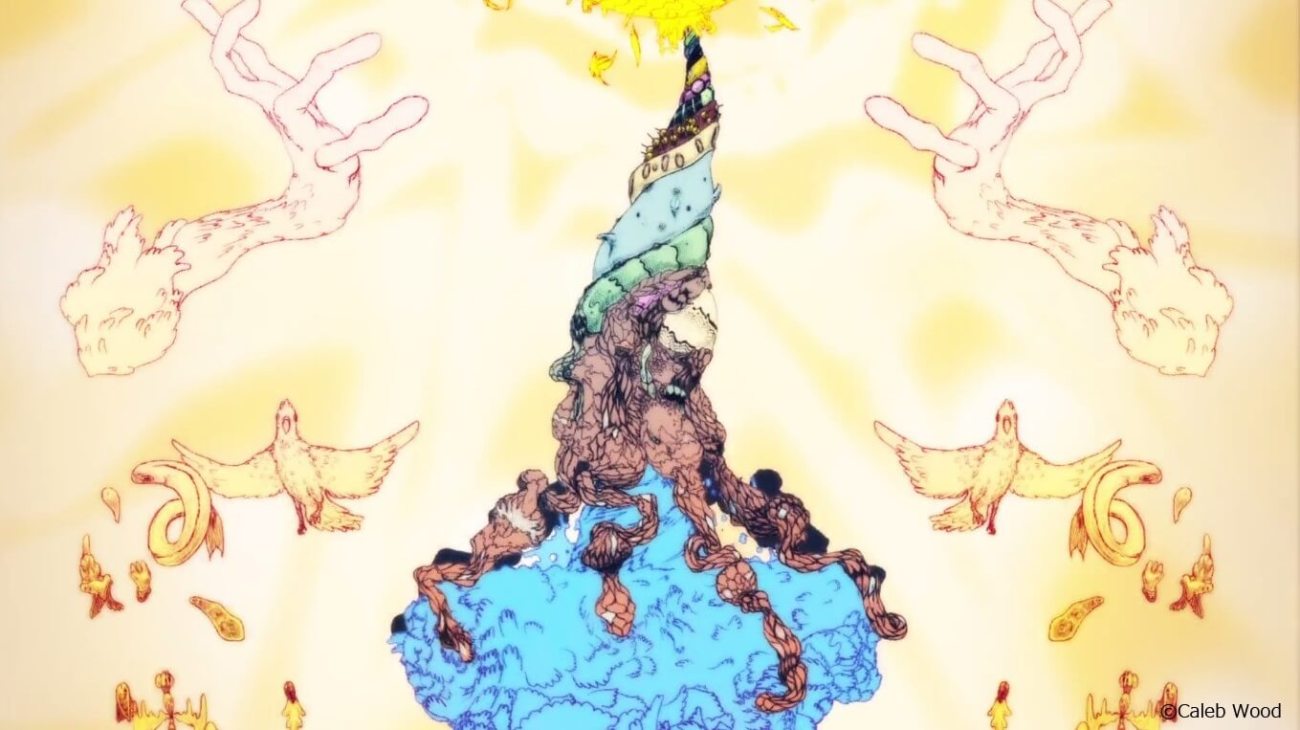
Japan, a country of contrasts
WAttention: What are your impressions of Japan?
Caleb Wood: My first visit in 2013 was a transition to a totally different culture. I was here for JAPIC AAIR, a residency program in Tokyo for foreign animation artists. I had three months to stay in Tokyo and made a film. During my stay, I visited Yoyogi Park every day and would just sit down and draw. “Goodbye Rabbit, Hop Hop” is the short film I made in this period. It incorporates the experience of getting out of the city and being enclosed by nature. I wanted to express the freedom you feel when entering the park. I also recorded the sounds here. Some of it is very urban and industrial, while the more natural sounds were recorded in Yoyogi Park.
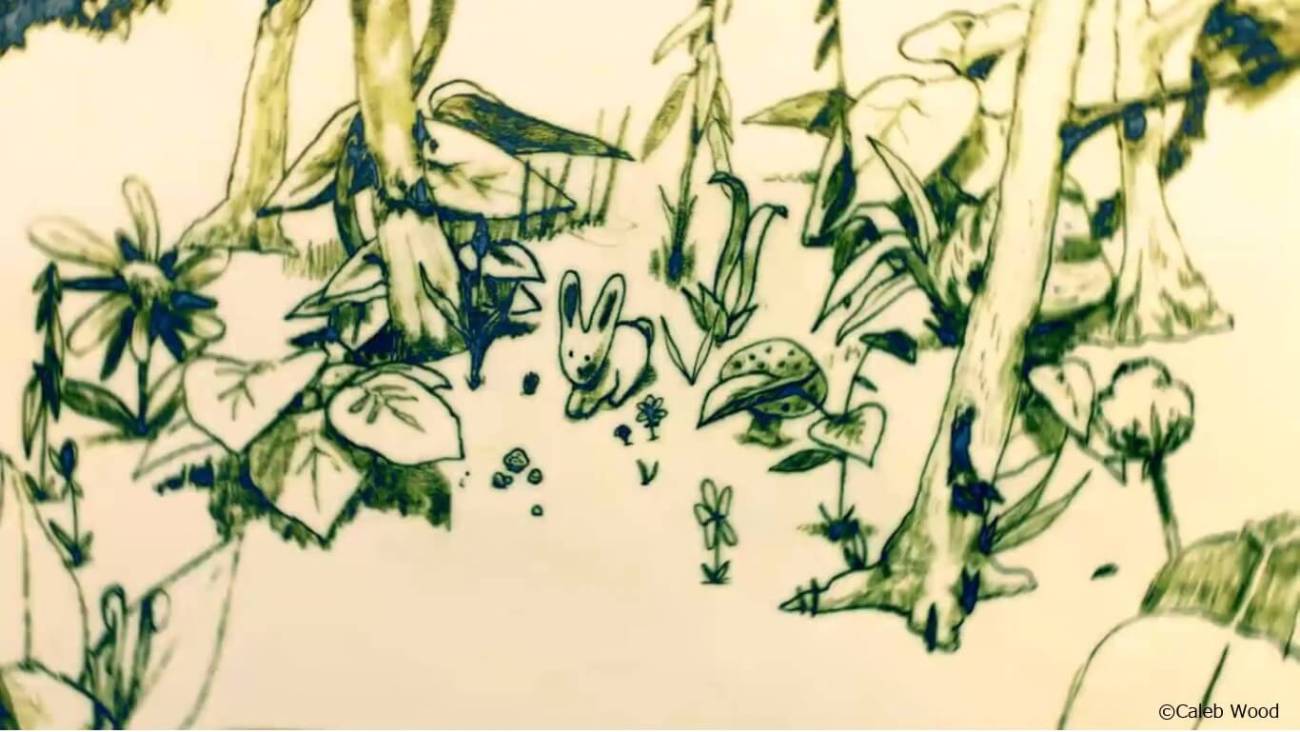
Caleb Wood: I have really fond memories of staying in Tokyo, and coming back here now 3 years later feels like coming back to an old house. There’s definitely a lot of nostalgia to it for me.
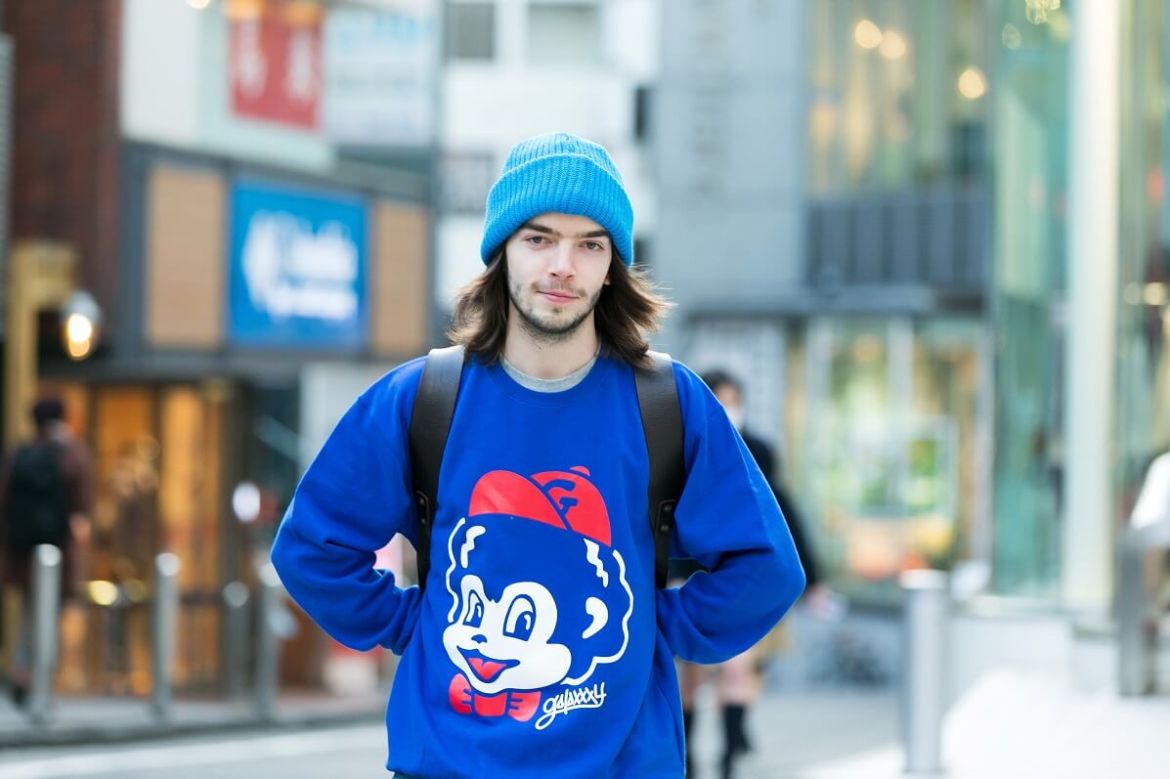
WAttention: How about you, David?
David OReilly:
There are many things I find inspiring here. Japan is a country of contrasts. There is a different way of looking at the world here, probably because it is an island. Island cultures tend to have their own unique eco-systems of culture. The first thing I really loved about Japan was the psychedelic music of the seventies. J.A Seazer for example, made a lot of incredible compositions. He was also responsible for a lot of music in the films of director Shuji Terayama. It was truly a revolutionary art movement at the time, and it was amazing to see how much emotion they put in their work. It has aggression and beauty at the same time, and is a great example of the contrasts that exist in Japanese culture. The people here are very polite and reserved, yet produce very extreme and strong culture.
WAttention: Do you feel that this is because the society here can be very strict? That the Japanese have a stronger will to put their emotion into their creations as they aren’t allowed to do so in everyday life?
David OReilly: Yes, I think so. Everybody is human and there are always going to be emotions escaping somehow. The people here are generally less extraverted than in the west, but what they want to say is often expressed in their art. It is very easy to say that for example the Soviet Union was evil and bad, but at the same time, it did produce Tarkovsky, one of the greatest artists of the last century.
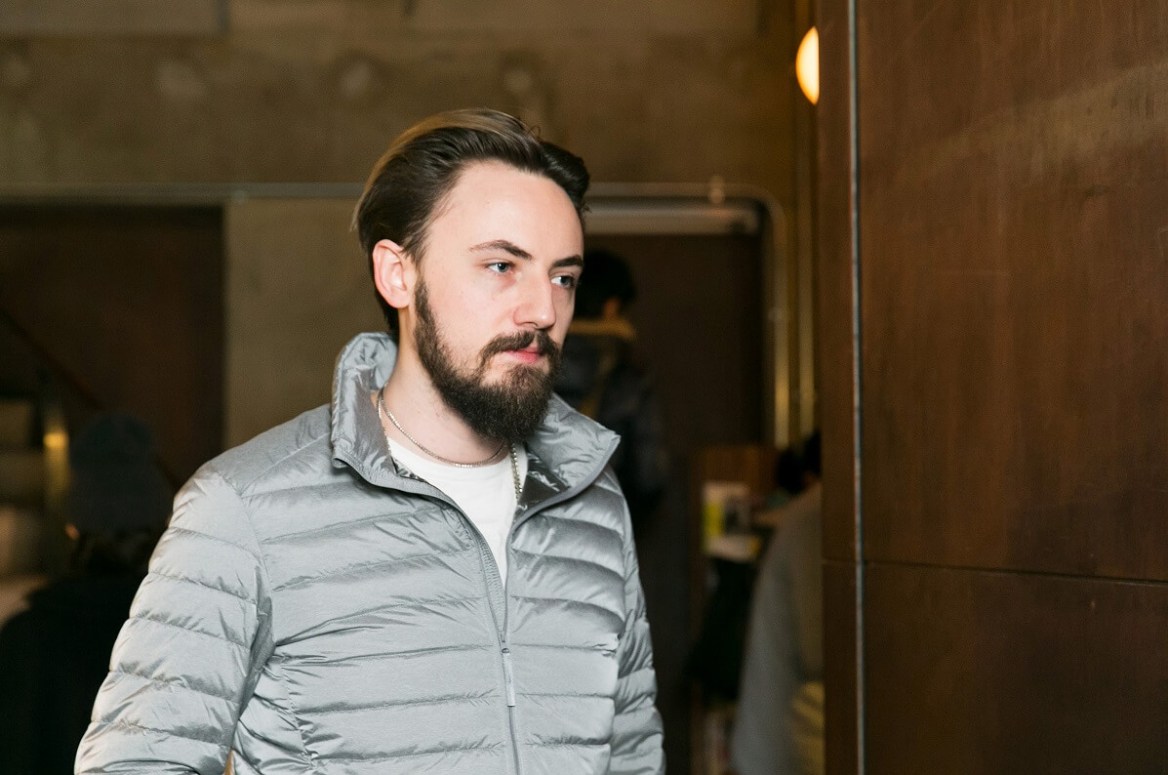
The sense of timing in Japanese anime
WAttention: What do you think about Japanese anime?
Caleb Wood: I find the sense of timing very interesting. American animations have all become very similar to each other. People expect the same thing regarding how stories are told and how scenes should be animated. Japanese animation feels more unfamiliar and opens the mind. This is especially so for independent work, but even the bigger works – say Ghibli Studios – also have their own specific timing.
WAttention: We feel that the movement and sound in your works, especially “Little Wild”, have things in common with Ghibli Studios. Were you influenced by them?
Caleb Wood: Not the background scenery or story, but definitely the movement. A Japanese animator I especially respect is Shinya Ohira. He is a freelance animator that does scenes for many major Japanese animation studios. If there is a scene in a Japanese anime you find especially spectacular, there’s a pretty big chance it was done by him.
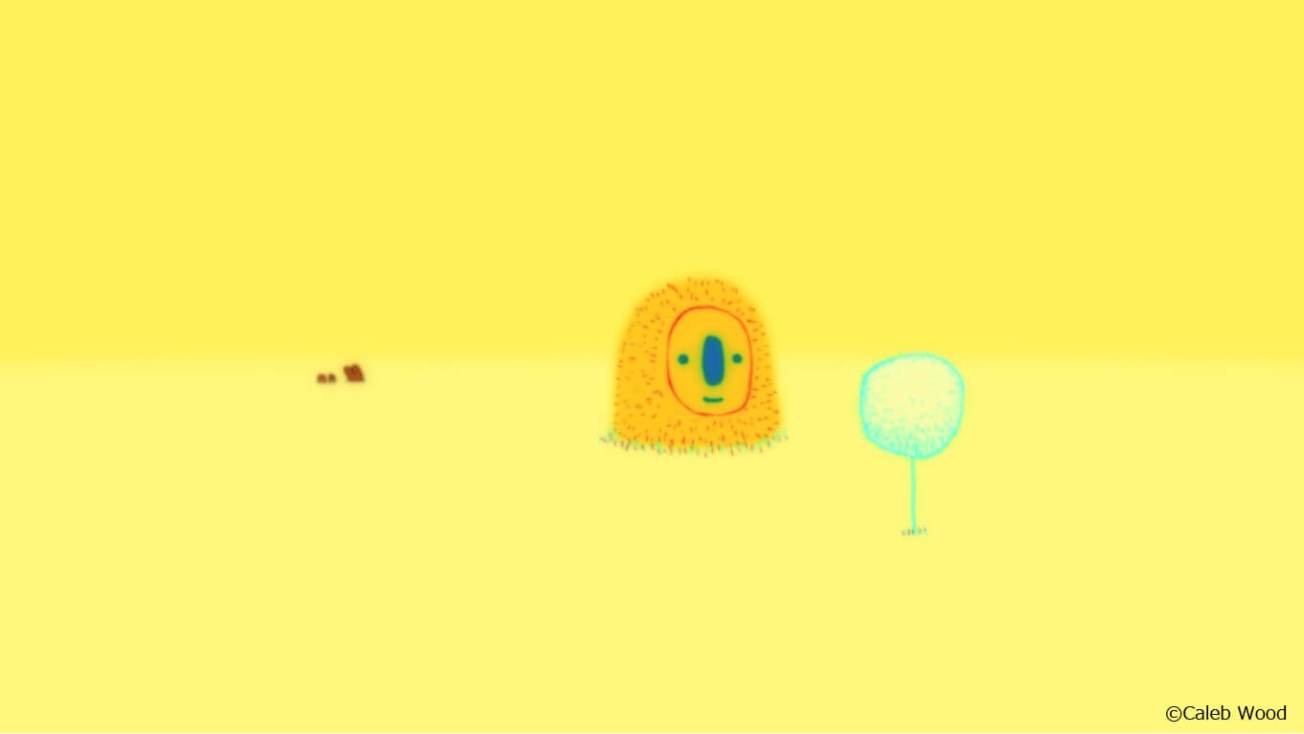
Wattention: Are there any other Japanese animators or directors you like?
Caleb Wood: Although very different from my own approach, I think that the editing of Satoshi Kon, the director of “Millennium Actress” and “Paprika” is amazing. His works are really more like film than animation.
Japanese games, looking forward and backward
WAttention: How about other mediums than animation. David, you developed “Mountain”, an indie game in 2014. Are there any Japanese video games you grew up with?
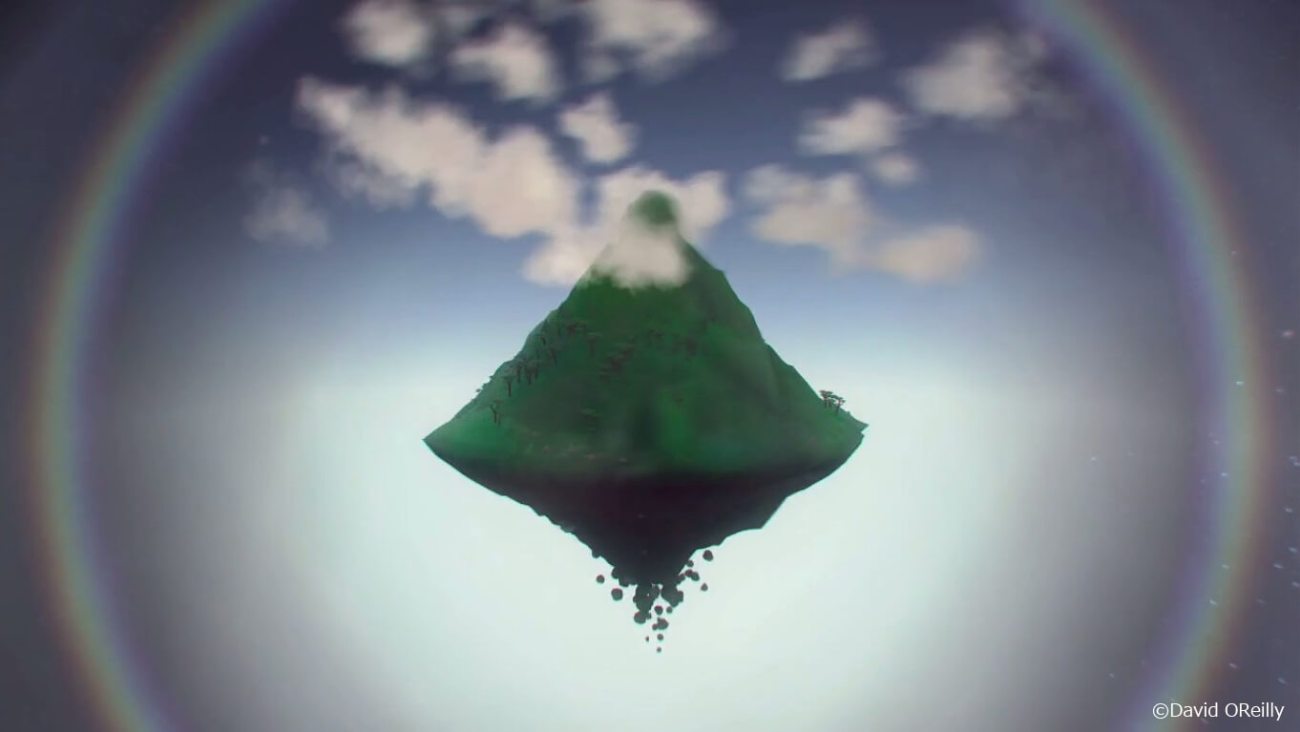
David OReilly: Definitely. Growing up playing Japanese video games and at the same time watching old cartoons, reading comics and watching European and Asian cinema are the biggest components of influences for my works. Although I was not allowed to play that many video games, I endlessly played Super Mario Land on the Gameboy in my early years. When Final Fantasy VII came out, I was about 12, and the game totally got into my imagination. It was a huge leap of technology back then.
WAttention: What are you expecting from the upcoming Final Fantasy VII remake?
David OReilly: It’s a really unusual time in culture where classics are constantly being remade. As a creator you always want to go to the source and see what the magic is. I will definitely play the remake because it will be a chance to revisit my childhood. That being said, I cannot think of a remake that is better than the original. When something original is made, it has a quantity of experimentation going on and looks forward, while a remake is obviously a process of looking back.
It required a Japanese mind to make the purest thing
WAttention: Are there any more recent Japanese games you enjoy playing?
David OReilly: Dark Souls is one of my favorite series today. When I first played it, I totally hated it. It was way too masochistic and unbelievably hard. But once I understood how the game develops it took over my head. It’s a very pure game experience that makes you feel like you are in a dream. The feeling, the tone, how the characters interact is mindless and possessed in a zombie like way. The world looks realistic, but it is so abstract. It gave me a feeling I have never felt before. The environment is what you are experiencing, much more so than the narrative.
The game is a western RPG, but it required a Japanese mind to make the purest thing. It is very interesting to see how Japanese creators absorb ideas from other cultures.
Also, just by playing the first few hours of Metal Gear Solid V made me feel like there’s no reason to ever make an action movie again. The game does everything an action movie does, only 10 times better!
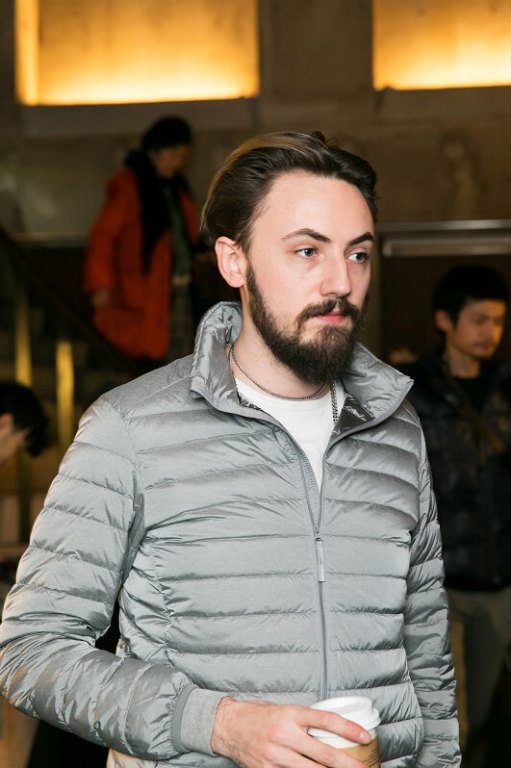
Dancing and experimenting
WAttention: I would like to end this interview by talking a bit about how the two of you work. What is most important for you as an artist?
Caleb Wood: When creating, there’s not something in specific I’m conscious about. I don’t really have a plan either. I just let the drawings become what they want to become and do what the animations tell me. It’s kind of like dancing. The narrative comes naturally through the movement.
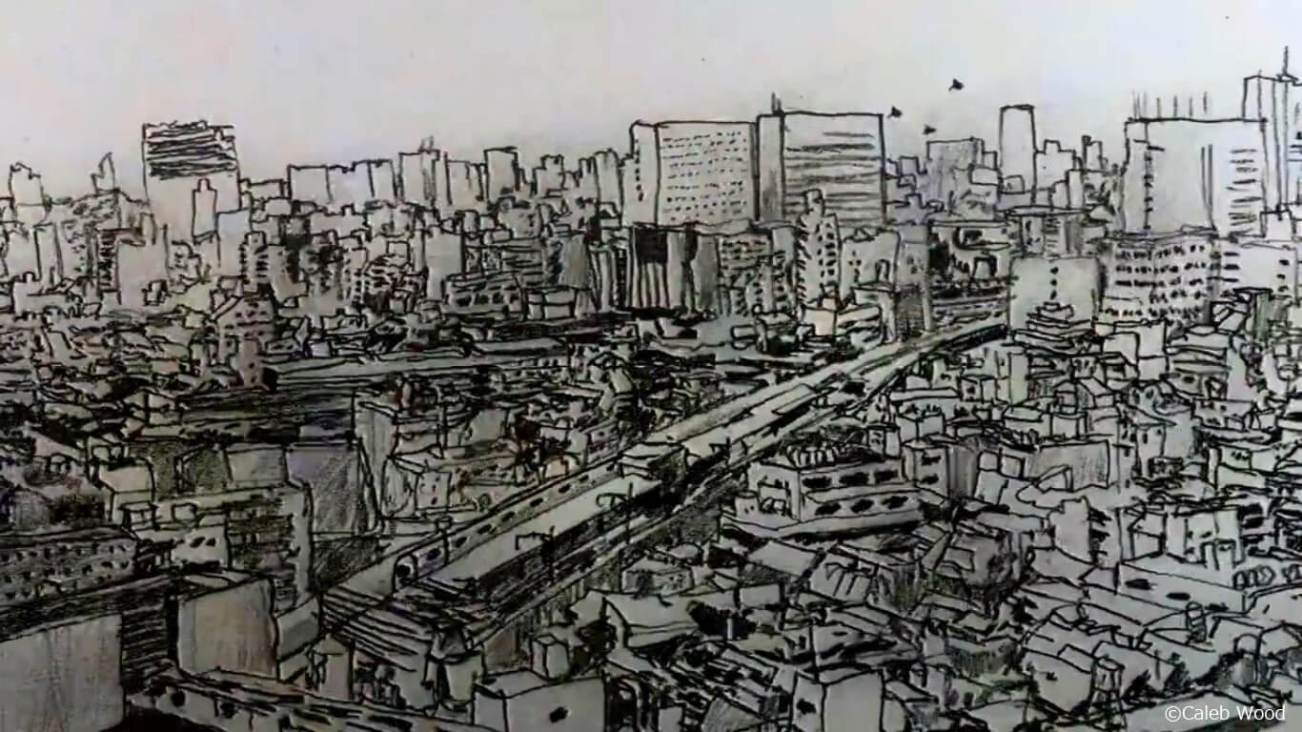
David OReilly: When I try to make something, I want to do something new and see where it goes. We tend to be amazed and inspired by new things and they change the way we see the world. If I do a new project, it’s always because I want to learn something new and grow my technical knowledge. To make a project interesting I have to learn new things. Doing new things is always risky, but without it a project is not as exciting.
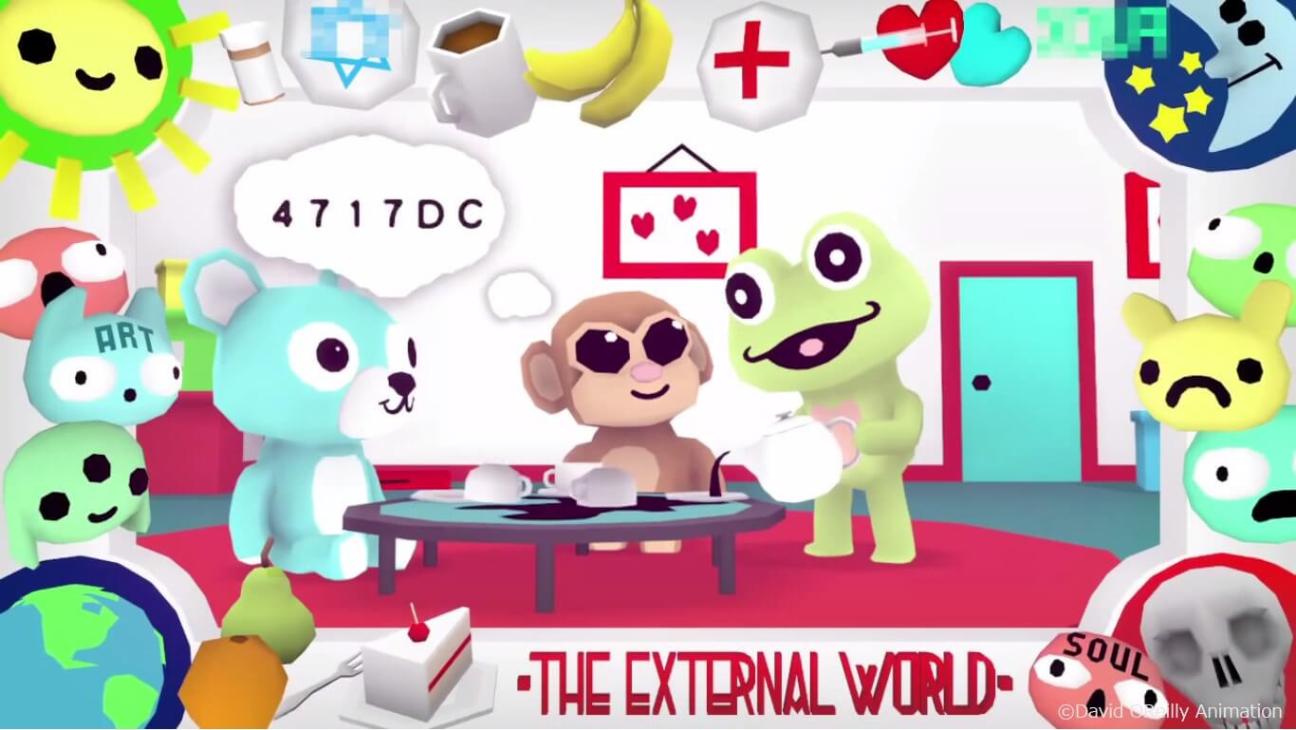
WAttention: Thank you both for your time!
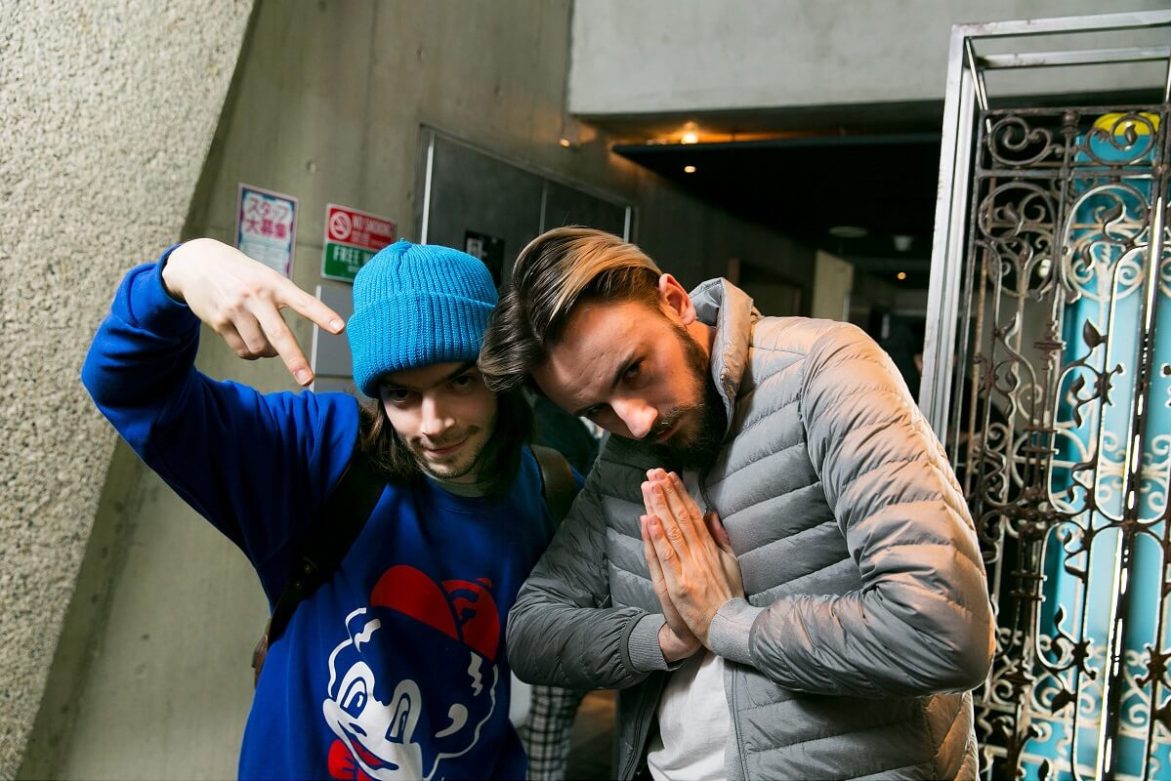
This article was written with the assistance of Fields Research Institute, which conducts research in entertainment.
 0
0

